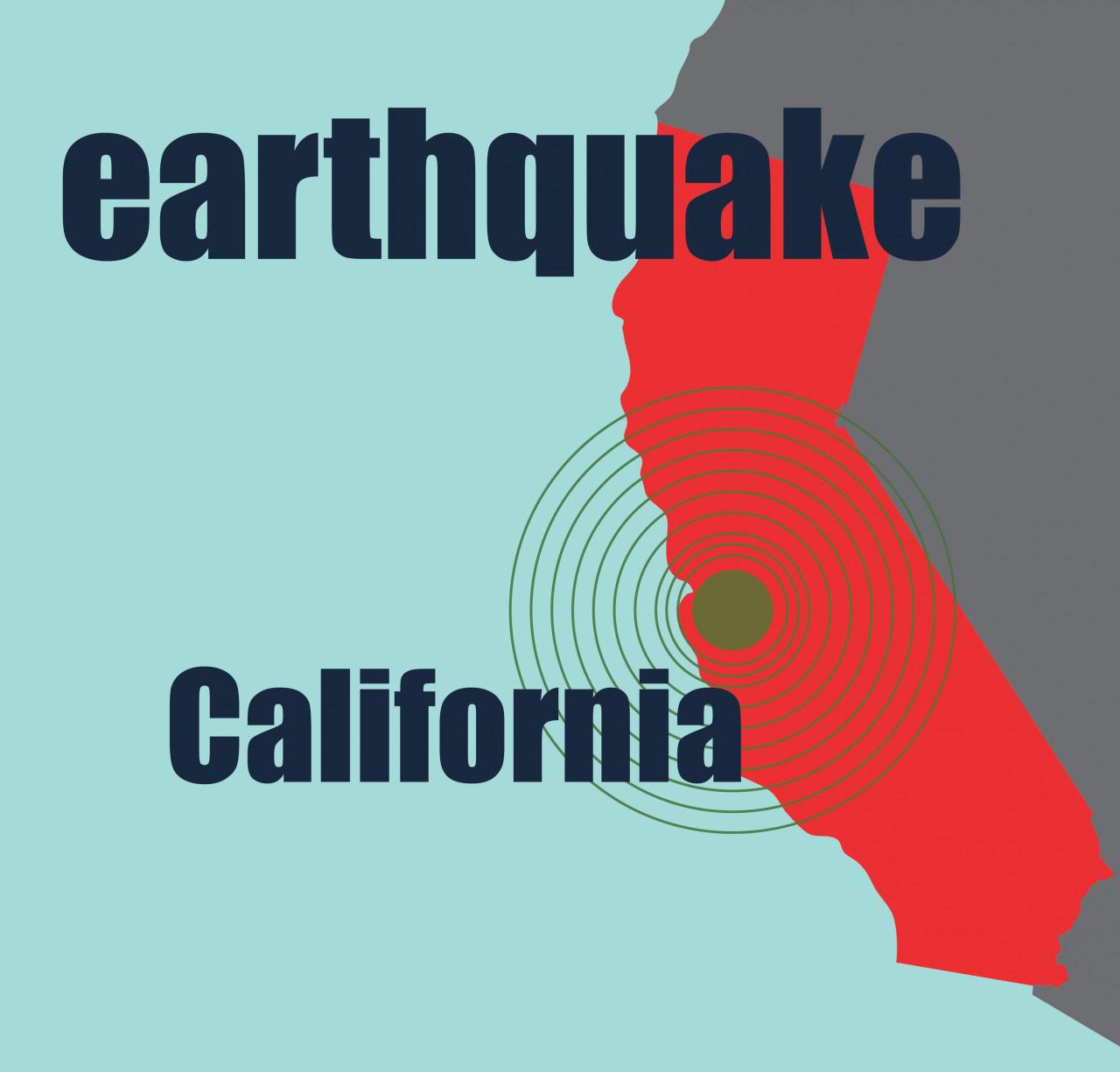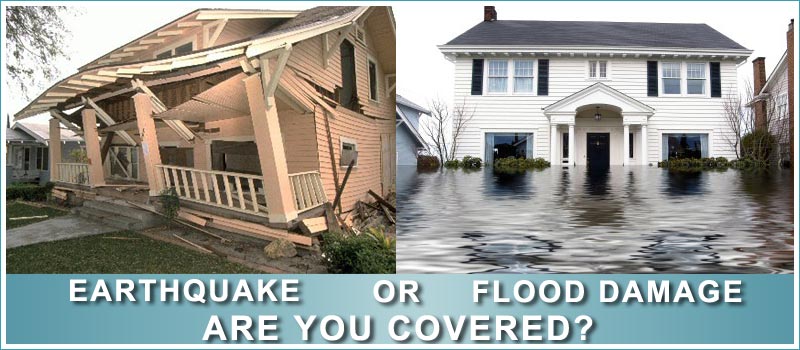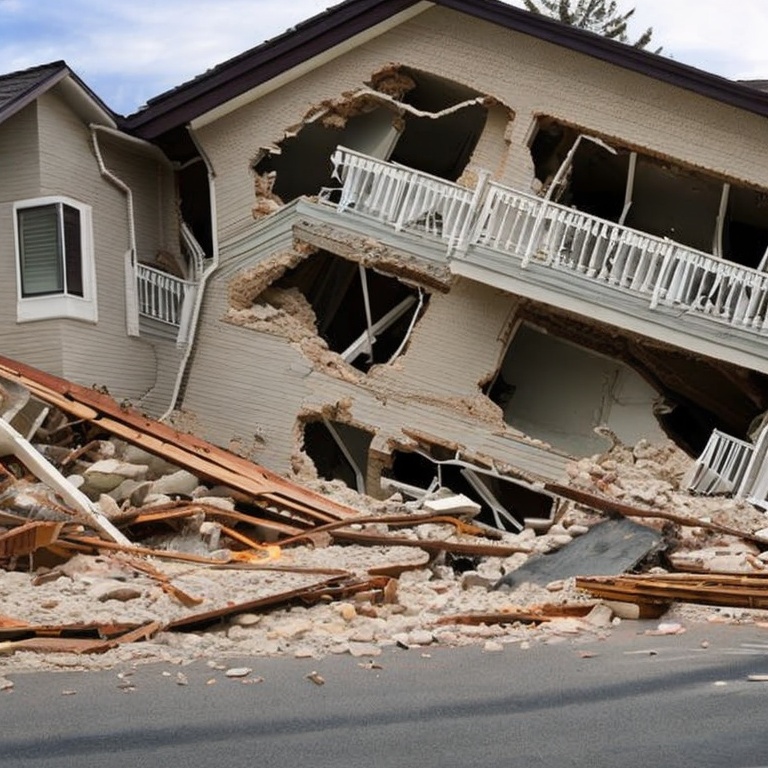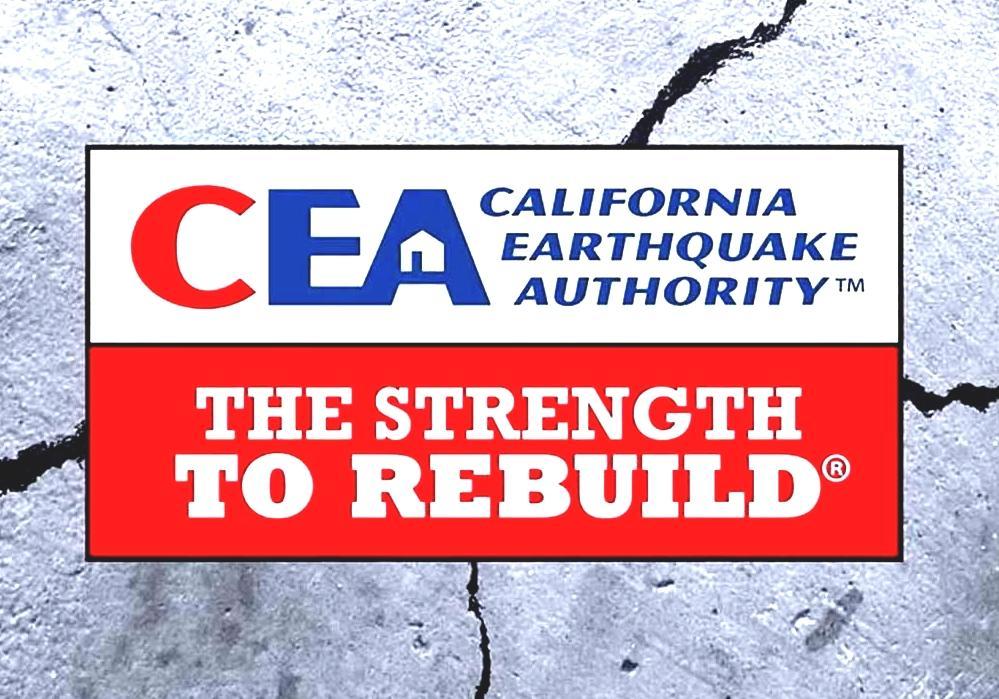California is renowned for its stunning landscapes and vibrant cities, but it also sits atop a network of active fault lines, making it one of the most earthquake-prone regions in the world. The potential for seismic activity looms large, and for homeowners, the question of earthquake insurance becomes a critical consideration. While many may assume their standard homeowners insurance covers earthquake damage, this is often not the case. Understanding the nuances of earthquake insurance in California is crucial for safeguarding your financial well-being and ensuring peace of mind in the face of a potential disaster.
This guide explores the intricacies of earthquake insurance in California, delving into the types of coverage available, the factors that influence premiums, the claims process, and the vital role of preparedness and mitigation. We’ll examine government programs, the economic impact of earthquakes, and case studies that highlight the importance of having adequate insurance. By understanding the complexities of earthquake insurance, California residents can make informed decisions to protect their homes and families from the financial devastation that an earthquake can bring.
Earthquake Insurance in California
California, a state renowned for its stunning landscapes and vibrant culture, also sits atop a complex network of fault lines, making it one of the most earthquake-prone regions in the world. The potential for devastating earthquakes is a constant reality for Californians, highlighting the critical importance of earthquake insurance. This insurance provides financial protection against the significant financial losses that can arise from an earthquake, ensuring peace of mind for homeowners and businesses.
Seismic Risks in California
California’s unique geological makeup presents a significant risk of earthquakes. The state is situated on the Pacific Plate, which is constantly grinding against the North American Plate. This tectonic activity creates immense pressure that is released in the form of earthquakes.
The San Andreas Fault, one of the most well-known and active fault lines in the world, runs through California for over 800 miles, traversing from the Salton Sea in the south to Cape Mendocino in the north. This fault is responsible for some of the most significant earthquakes in California’s history, including the 1906 San Francisco earthquake and the 1989 Loma Prieta earthquake.
Beyond the San Andreas Fault, numerous other active fault lines crisscross California, creating a complex network of seismic hazards. These faults are capable of generating earthquakes of varying magnitudes, ranging from minor tremors to devastating events.
History of Earthquake Insurance in California
Earthquake insurance in California has a long and evolving history, reflecting the state’s awareness of its seismic risks. The first earthquake insurance policies were introduced in the late 19th century, following the devastating 1906 San Francisco earthquake. These early policies were limited in coverage and often excluded specific perils, leaving many homeowners uninsured in the aftermath of major earthquakes.
Following the 1989 Loma Prieta earthquake, the California Earthquake Authority (CEA) was established in 1996. The CEA is a publicly funded, not-for-profit organization that provides earthquake insurance to homeowners and businesses throughout California. The CEA’s creation aimed to address the lack of earthquake insurance coverage in the state and ensure greater affordability and availability.
Over the years, earthquake insurance in California has undergone significant changes, adapting to evolving risks and technological advancements. Today, earthquake insurance policies offer a range of coverage options, including coverage for damage to buildings, personal property, and additional living expenses.
Types of Earthquake Insurance Coverage
California’s earthquake insurance market offers a variety of policies, each with distinct coverage features and pricing. Understanding these differences is crucial for selecting the most suitable policy for your needs and budget.
Policy Types
Earthquake insurance in California is generally offered as a separate policy, not included in standard homeowners or renters insurance. The primary policy types available are:
- Standard Coverage: This policy provides coverage for damage to the insured structure and personal property due to an earthquake. It typically includes coverage for repairs or replacement, as well as additional living expenses if the insured dwelling is uninhabitable.
- Guaranteed Replacement Cost Coverage: This policy guarantees that the insured structure will be rebuilt to its pre-earthquake condition, regardless of the cost increase due to inflation or building materials. This option offers peace of mind, especially in areas where rebuilding costs are high.
- Limited Coverage: This policy offers more affordable premiums but provides limited coverage for specific types of damage, such as foundation cracks or non-structural elements. This option might be suitable for homeowners with older homes or those on a tighter budget.
Deductibles and Coverage Limits
Earthquake insurance policies typically have high deductibles, which are the amount the policyholder pays out-of-pocket before the insurance coverage kicks in. These deductibles can range from 5% to 20% of the insured value of the property.
For example, a homeowner with a $500,000 home and a 10% deductible would need to pay $50,000 out-of-pocket before the insurance coverage begins.
Coverage limits refer to the maximum amount the insurance company will pay for earthquake-related damages. These limits can vary depending on the policy type, the value of the property, and the insurer.
Coverage Comparisons
Different insurers may offer variations in coverage details, such as:
- Coverage for Personal Property: Some insurers may offer limited coverage for personal property, while others may provide comprehensive coverage for items like furniture, electronics, and clothing.
- Coverage for Landslides and Subsidence: Some policies may include coverage for damages caused by landslides or subsidence related to an earthquake, while others may exclude these risks.
- Additional Living Expenses: The amount of coverage for additional living expenses, such as hotel stays or temporary housing, can vary between insurers.
It’s crucial to compare quotes from multiple insurers to find the policy that best meets your specific needs and budget. Consider factors like coverage limits, deductibles, and the reputation of the insurer when making your decision.
Factors Affecting Earthquake Insurance Premiums
Earthquake insurance premiums in California are determined by a complex interplay of factors, each contributing to the overall cost of coverage. Understanding these factors is crucial for homeowners and prospective buyers, allowing them to make informed decisions about their insurance needs and potentially mitigate costs.
Location
The seismic risk of a property is a primary determinant of earthquake insurance premiums. California’s geography and geology are characterized by active fault lines, leading to varying levels of earthquake vulnerability across the state. Areas located closer to active fault zones or situated on unstable soil are generally considered higher risk and thus subject to higher premiums. For instance, properties in the San Francisco Bay Area, known for its proximity to the San Andreas Fault, typically face higher premiums compared to locations in the Central Valley.
Property Value
The value of a property is directly linked to the potential financial loss in case of an earthquake. Higher-valued homes, due to their greater reconstruction costs, will generally command higher earthquake insurance premiums. This reflects the principle that the insurer bears a larger financial burden in the event of damage to a more valuable property.
Construction Type
The type of construction used in a property plays a significant role in its earthquake resistance. Homes built with reinforced concrete or steel frames tend to withstand seismic activity better than those constructed with wood or brick. Earthquake insurance premiums are often lower for properties with more resilient construction methods, reflecting a lower risk of damage and associated claims. For example, a single-story home with a concrete foundation and reinforced walls may receive a lower premium compared to a multi-story structure with a wood frame and unreinforced brick walls.
Earthquake Insurance Claims Process
Filing an earthquake insurance claim in California involves a series of steps designed to assess the damage, determine coverage, and facilitate the repair or replacement of your property. It’s essential to understand the process and gather the necessary documentation to ensure a smooth and successful claim.
Steps Involved in Filing a Claim
The process of filing an earthquake insurance claim in California generally involves the following steps:
- Contact Your Insurance Company: Immediately after an earthquake, contact your insurance company to report the damage. They will provide you with instructions on how to proceed with your claim.
- Document the Damage: Take detailed photographs and videos of the damage to your property. This documentation will be crucial in supporting your claim. Be sure to capture the extent of the damage, including any structural issues, cracked walls, or broken appliances.
- File a Claim: Your insurance company will provide you with a claim form. Complete the form accurately and thoroughly, providing all the necessary information about the earthquake and the damage to your property.
- Inspection and Evaluation: An insurance adjuster will be assigned to your claim. They will inspect your property, assess the damage, and determine the extent of coverage under your policy. You should be present during the inspection and provide any relevant information to the adjuster.
- Negotiate the Settlement: Once the adjuster has completed their evaluation, they will present you with a settlement offer. Review the offer carefully and negotiate with the adjuster if you believe the amount is insufficient. It’s essential to understand your policy coverage and the scope of the damage to ensure a fair settlement.
- Receive Payment: Once you and the insurance company agree on the settlement amount, you will receive payment for the covered damages. This payment can be used to repair or replace your damaged property.
Documentation Required for a Successful Claim
To ensure a successful earthquake insurance claim, you should gather the following documentation:
- Proof of Ownership: Provide your insurance company with documentation proving you own the property, such as a deed or title.
- Policy Documents: Have your earthquake insurance policy readily available. This will help you understand your coverage and ensure you meet all the necessary requirements.
- Photos and Videos: As mentioned earlier, take detailed photos and videos of the damage to your property. These will serve as evidence of the extent of the damage and support your claim.
- Repair Estimates: Obtain estimates from qualified contractors for the cost of repairing or replacing the damaged property. This will help you negotiate a fair settlement with your insurance company.
- Other Relevant Documents: Depending on the specific circumstances of your claim, you may need to provide other documentation, such as receipts for personal property, building permits, or inspection reports.
Navigating the Claims Process Effectively
To navigate the earthquake insurance claims process effectively, consider the following tips:
- Understand Your Policy: Carefully review your earthquake insurance policy before an earthquake occurs. This will help you understand your coverage limits, deductibles, and any exclusions.
- Communicate Clearly: Maintain open and clear communication with your insurance company throughout the claims process. Be prompt in responding to their requests and provide any necessary information or documentation.
- Keep Detailed Records: Maintain detailed records of all communication with your insurance company, including dates, times, and summaries of conversations. This will help you track the progress of your claim and resolve any disputes.
- Seek Professional Advice: If you are unsure about any aspect of the claims process or believe your insurance company is not treating you fairly, consider seeking advice from a qualified insurance attorney or public adjuster. These professionals can help you understand your rights and navigate the complexities of the claims process.
Earthquake Preparedness and Mitigation

California is known for its seismic activity, making earthquake preparedness and mitigation crucial for residents and businesses. Understanding the potential risks and taking proactive steps can significantly reduce the impact of earthquakes and protect lives and property.
Essential Earthquake Preparedness Measures
It is vital to have a comprehensive plan in place to address potential earthquake scenarios. Here’s a checklist of essential preparedness measures for California residents:
- Secure Heavy Objects: Secure heavy objects like bookcases, mirrors, and artwork to prevent them from falling and causing injuries during an earthquake.
- Create an Emergency Kit: Prepare an emergency kit that includes essential supplies like food, water, first-aid kit, flashlight, batteries, a whistle, and a radio. This kit should be readily accessible and sufficient for at least 72 hours.
- Develop an Evacuation Plan: Establish a safe meeting place for family members or coworkers and practice evacuation routes. Ensure everyone knows how to safely exit the building and where to gather afterward.
- Learn First Aid and CPR: Knowing basic first aid and CPR techniques can be crucial in providing immediate assistance during an earthquake and potentially saving lives.
- Secure Water Heater: Secure the water heater to prevent it from falling and causing damage or leaks during an earthquake.
- Check Gas Lines: Inspect gas lines for leaks and ensure they are properly secured to prevent fires.
- Prepare for Aftershocks: Remember that earthquakes often have aftershocks, which can be just as damaging as the initial quake. Be prepared to stay safe and follow safety guidelines after the initial earthquake.
Earthquake Risk Mitigation Strategies
Proactive steps can be taken to mitigate earthquake risks and reduce potential damage to homes and businesses. Here are some effective strategies:
- Seismic Retrofitting: Strengthening existing buildings and structures through seismic retrofitting can significantly improve their resistance to earthquake forces. This involves reinforcing walls, foundations, and other structural components to withstand shaking.
- Flexible Building Design: Incorporating flexible building designs can help structures absorb earthquake energy without collapsing. This can include using flexible materials, shock absorbers, and other innovative techniques.
- Landscaping: Proper landscaping can help prevent soil liquefaction, a phenomenon that can occur during earthquakes and cause significant damage to foundations and structures.
- Emergency Preparedness Training: Regular emergency preparedness training for employees and residents can help them respond effectively to earthquakes and minimize injuries and damage.
- Regular Inspections: Conduct regular inspections of buildings and structures to identify potential vulnerabilities and address them promptly.
Building Codes and Seismic Retrofits
Building codes play a crucial role in enhancing earthquake resilience by setting minimum standards for new construction and renovations. Seismic retrofits are modifications made to existing structures to improve their resistance to earthquakes. These retrofits can include:
- Foundation Reinforcement: Strengthening the foundation to withstand earthquake forces.
- Wall Bracing: Adding bracing to walls to prevent them from collapsing.
- Roof Strengthening: Reinforcing the roof to prevent it from falling during an earthquake.
- Seismic Isolators: Installing devices that decouple the building from the ground to reduce the impact of earthquake shaking.
Government Programs and Resources
California residents have access to various government programs and resources to assist them with earthquake insurance and preparedness. These programs aim to reduce the financial burden of earthquake damage and promote proactive measures to mitigate potential risks.
California Earthquake Authority (CEA)
The CEA is a non-profit, publicly managed organization established by the California legislature in 1996. Its primary role is to provide earthquake insurance to California homeowners, renters, and condo owners who may have difficulty obtaining coverage through the private market.
The CEA offers a variety of earthquake insurance policies with varying levels of coverage, including:
- Basic Coverage: This policy covers damage to the insured property’s structure, including the foundation, walls, roof, and other attached structures. It also covers damage to personal property, but only up to a certain limit.
- Comprehensive Coverage: This policy provides broader coverage, including damage to personal property, landscaping, and certain types of outbuildings. It also offers higher coverage limits than the basic policy.
- Replacement Cost Coverage: This policy provides coverage for the full replacement cost of the insured property, regardless of the age or depreciation of the property.
The CEA also offers a variety of discounts and incentives to encourage homeowners to take steps to mitigate earthquake risk, such as retrofitting their homes or installing earthquake-resistant features.
State-Funded Earthquake Mitigation Programs
The California government provides funding for various programs that support earthquake mitigation efforts. These programs aim to encourage homeowners and businesses to make their properties more resilient to earthquake damage. Some notable programs include:
- California Earthquake Brace + Bolt Program: This program provides financial assistance to homeowners who retrofit their homes to meet seismic safety standards. The program covers a portion of the cost of retrofitting, and homeowners can apply for grants and loans.
- California Seismic Safety Commission: This commission is responsible for developing and implementing policies to reduce earthquake risk in California. The commission provides funding for research, education, and outreach programs related to earthquake preparedness.
- California Department of Conservation: This department offers various programs and resources to support earthquake mitigation efforts, including technical assistance, training, and funding for projects that reduce earthquake risk.
These programs are crucial in promoting earthquake safety and reducing the potential for catastrophic damage.
The Economic Impact of Earthquakes

Earthquakes pose a significant threat to California’s economy, potentially causing widespread damage and disruption. The economic impact of these events can be substantial, encompassing various sectors and aspects of the state’s economic landscape.
The Costs of Earthquake Damage
The most direct and immediate impact of earthquakes is the damage they inflict on property. Buildings, infrastructure, and personal belongings can be severely damaged or destroyed, leading to significant financial losses. The cost of rebuilding or repairing damaged structures can be substantial, particularly for major earthquakes. For instance, the 1994 Northridge earthquake in Southern California caused an estimated $40 billion in damages, highlighting the scale of economic losses that can occur.
Case Studies and Examples
California has a long and tumultuous history with earthquakes, experiencing numerous seismic events that have shaped the state’s landscape and influenced its development. These events have not only caused significant damage but also highlighted the importance of earthquake insurance and preparedness. Analyzing past earthquakes provides valuable insights into the potential impact of future events and emphasizes the need for proactive measures to mitigate risks.
Notable Earthquake Events in California
The following table showcases some of the most significant earthquakes in California, highlighting their magnitude, location, date, and economic impact. These events demonstrate the devastating consequences of earthquakes and the crucial role earthquake insurance plays in supporting recovery efforts.
| Magnitude | Location | Date | Economic Impact |
|---|---|---|---|
| 7.9 | Fort Tejon, California | January 9, 1857 | Estimated at $100 million in today’s dollars. |
| 7.8 | San Francisco, California | April 18, 1906 | Estimated at $3.5 billion in today’s dollars. |
| 6.7 | Northridge, California | January 17, 1994 | Estimated at $40 billion in today’s dollars. |
| 6.0 | San Fernando Valley, California | February 9, 1971 | Estimated at $500 million in today’s dollars. |
The Role of Earthquake Insurance in Recovery
Earthquake insurance has played a significant role in the recovery process following major earthquakes in California. For example, after the 1994 Northridge earthquake, insurance payouts helped homeowners and businesses rebuild and recover. However, it’s crucial to note that not all homeowners and businesses in California have earthquake insurance. This can lead to significant financial hardship and prolonged recovery periods for those who are uninsured.
“The 1994 Northridge earthquake demonstrated the importance of earthquake insurance. While many homeowners and businesses were able to rebuild with the help of insurance payouts, those who were uninsured faced significant financial burdens and struggled to recover.” – Dr. Susan Cutter, Professor of Geography and Disaster Science at the University of South Carolina
Future Trends and Considerations

The landscape of earthquake insurance in California is constantly evolving, driven by factors such as seismic risk assessments, technological advancements, and changing regulatory environments. As the state grapples with the potential impacts of climate change, the need for comprehensive earthquake preparedness and mitigation strategies is becoming increasingly critical.
Climate Change and Earthquake Risk
Climate change is expected to have a significant impact on earthquake risk in California. Rising sea levels, increased coastal erosion, and more frequent and intense storms could exacerbate existing seismic vulnerabilities. For example, the increased frequency of severe storms could lead to soil liquefaction, which can significantly amplify the effects of earthquakes. This raises concerns about the adequacy of existing earthquake insurance policies and the need for future adjustments to account for these evolving risks.
Emerging Technologies and Innovations
Technological advancements are playing a crucial role in improving earthquake preparedness and mitigation. For instance, advanced early warning systems can provide precious seconds of notice before the arrival of strong seismic waves, enabling individuals and infrastructure to take protective measures.
- Real-time monitoring networks are continuously gathering data on seismic activity, providing valuable insights into earthquake patterns and potential risks.
- Building codes are being updated to incorporate new seismic design standards, resulting in more resilient structures capable of withstanding stronger earthquakes.
- Artificial intelligence and machine learning algorithms are being used to analyze vast amounts of data, identifying potential seismic hazards and improving earthquake forecasting.
Conclusion

The potential for significant earthquake damage in California underscores the critical importance of earthquake insurance. This comprehensive guide has Artikeld the key aspects of earthquake insurance in California, including its types, factors influencing premiums, and the claims process. While earthquake insurance can provide financial protection in the event of a major earthquake, it is essential to understand that it is not a substitute for proper preparedness and mitigation measures.
The Importance of Preparedness and Mitigation
Preparedness and mitigation efforts are crucial for minimizing the impact of earthquakes and protecting lives and property. Investing in earthquake-resistant construction, securing heavy objects, and having an emergency plan in place can significantly reduce the risks associated with earthquakes. Furthermore, understanding the potential hazards in your area and participating in community preparedness programs can enhance your overall resilience.
Closing Notes
In California, the threat of earthquakes is a reality that cannot be ignored. While no one can predict when or where the next tremor will strike, proactive steps can significantly reduce the potential for financial ruin. Understanding the importance of earthquake insurance, diligently preparing for a potential disaster, and actively participating in mitigation efforts are essential for navigating the seismic realities of this state. By embracing these strategies, California residents can navigate the challenges of earthquake risk and build a more resilient future.

